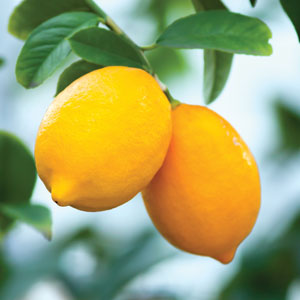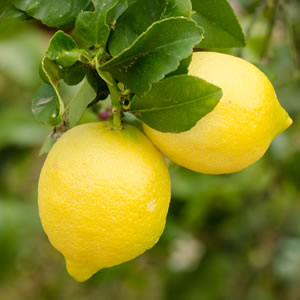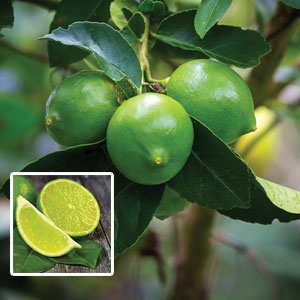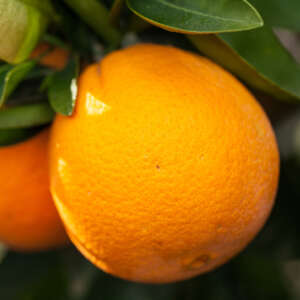Growing Citrus Trees
As one of the most loved tree varieties grown in backyards across the country, Australians have enjoyed home grown citrus fruits for over one hundred years. Growing lemon trees, oranges, mandarines, limes and other citrus fruits is a great way to add colour to your garden and grow your own tasty produce. By growing citrus trees, you will decorate your garden with beautiful and fragrant flowers that eventually produce zingy, flavoursome fruit that you can harvest for years to come.
Citrus trees require a bit of love, attention and the right growing conditions to thrive. Gardeners can grow citrus trees in both pots and gardens as long as the trees have sufficient sunlight and are planted in quick-draining soil. When properly cared for, citrus trees will start producing fruits roughly two years after planting.

Dwarf Lemon Lisbon
How to grow citrus trees in Australia
Climatic zones
The Australian climate provides optimal conditions for growing mandarin trees and the like. They will grow in most temperatures, as long as the area gets sufficient sunlight and the soil can drain water quickly.
If you live in a colder climate, you may prefer growing citrus trees in pots rather than in your garden. This way you can position your citrus tree under shelter to protect from strong winds and frost.
When to plant
The best season to plant your citrus tree depends on where you live. If you live in a cooler part of the country, waiting until spring when the soil is warmer will yield the best results. If you live in a warmer area, you can plant your citrus tree in autumn. No matter where you are, it’s important to avoid planting citrus trees in the heat of summer.
Soil preparation
Preparing your soil is one of the most important things to do before growing citrus trees.
As citrus trees like to be watered every week in their first year of life, it’s important to plant in soil that drains quickly. Dig a hole and fill it up with water to check whether it drains in less than thirty minutes. You can also improve the soil by adding natural fertilisers such as blood and bone, rotted manure and potash.
How to plant

Dwarf Lime Tahitian ST.14
While it is certainly an option to grow citrus trees from seed, it’s a better option to start from a small plant or starter tree. Planting citrus trees in north-facing areas gives them the best chance to grow.
For your citrus tree to survive, you’ll need to plant it in an area that gets five hours of sunshine at a minimum, per day.
You can also grow citrus trees alongside walls that get a lot of sunlight so that the heat from the wall can warm the tree. If you have planted your citrus tree in a pot, you can bring them inside during winter to protect them from the elements.
Plant care
Caring for citrus trees is fairly simple. The most important thing you can do for your new citrus tree is water it weekly during its first year of life, or more often when the weather is extremely windy or sunny. Once your citrus tree is older than one year, you can scale back how often you water it to once every three weeks.
As citrus trees are gross feeders, fertilising them will also help them grow strong and healthy. Every three to four months, fertilise your citrus tree with well-rotted cow manure or blood and bones. From October to January, you can feed your citrus trees with nitrogen-rich fertilisers to promote fruiting.
Citrus trees are often the target of pests such as the citrus leafminer and other diseases. When you’re growing citrus trees, it’s important to pay close attention to the signs of citrus leafminers, which can cause distortion in the new growth. To minimise the likelihood of the citrus leafminer taking over, spritz it with an oil spray that contains white oil and pest oil between late spring and autumn. This will make the leaves slippery and undesirable for the citrus leafminers.
As a general rule, it’s good to prune to around 2-3 metres wide and tall. Keeping your citrus trees compact will give them the best chance to produce an abundance of fruit.
Types of citrus trees
Lemon Eureka

LEMON EUREKA – Garden Express Australia
Lemon Eureka (Citrus x Limon) is the most popular lemon in the world and is the most common grown in home gardens. This citrus tree bears an abundance of large, juicy lemons all year round.
Tahitian Lime

Tahitian Lime
Tahitian Limes (Citrus x Latifolia) produce thin-skinned round, seedless limes. This citrus tree is well suited to the Australian climate and prefers to be planted in sheltered areas within cooler climates.
Washington Navel Orange

Dwarf Orange Washington Navel Ppldwawna
Washington Navel Orange (Citrus sinensis) is the most popular and oldest Navel Orange grown in Australia. Washington Navel Orange trees bear large round oranges that are best eaten fresh or consumed as juice. Once established, these citrus trees flower between winter and spring and then produce fruit.
Emperor Mandarin

– Garden Express Australia
Emperor Mandarin (Citrus x Reticulata) is an Australian lunchbox favourite, bearing fruit that is sweet and delicious. This citrus tree produces fruit that has puffy skin, making it easy to peel and enjoy. Emperor Mandarin is one of the most popular mid-season varieties available in Australia.
Browse our citrus plants and tree range today
With a wide range of varieties and fruits available, there is a citrus tree to suit everyone. If you’re interested in growing citrus trees, get in touch with the experts at Garden Express, and browse our extensive range of citrus trees online.






